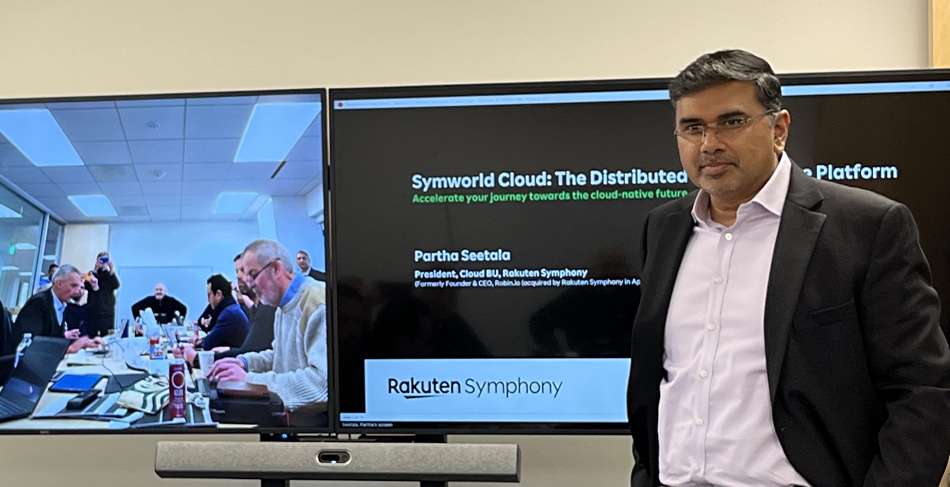Japan’s Rakuten Symphony business unit is setting up automated and containerized 5G edge deployments, using acquired Robin.io technology to do what HCI edge suppliers do with virtualized server systems.
Update: Rakuten Symphony positioning corrected. 14 Feb 2023.
Kubernetes storage startup Robin.io was bought by Rakuten Symphony in March 2022. Rakuten Symphony is a supplier of products and services to mobile operators, such as Rakuten Mobile, and has 4G and 5G capabilities. The 5G side is focused on internet edge sites that will need fitting out with IT systems running cloud-native applications, which was Robin’s technology focus.

Partha Seetala, the president of Rakuten Symphony’s Cloud business unit, told an IT Press Tour in January that the unit was developing a Symworld Cloud to provision distributed stateful edge platforms. Storage is just one part of such a deployment which has to send a complete software environment to an edge site to load and set up all the component IT infrastructure pieces, start it up and then monitor, manage and upgrade the software in the remote site.
Seethala said stateful edge sites were needed because, if data is not filtered, processed and acted on closest to where it is generated, then it results in a poor user experience, increased cost from transferring data over the network, and poor end-to-end performance. The compute needs to be located where the data is generated.
We should consider two kinds of edge locations: geographically dispersed far edge sites such as drive-thru restaurants and coffee shops, oil and gas extraction sites, shops in malls and so forth; as well as larger near edge sites. There can be thousands of such edge sites, with tens of thousands of Kubernetes clusters across the far edge and thousands of them across the near edge. Sending people out to each one to do a manual installation is not feasible.
This kind of automated deployment and setup has been provided for edge HCI sites (with hypervisors) by the main suppliers, such as Scale Computing. But Kubernetes-orchestrated, cloud-native edge sites are different, and the automated software deployment and startup has been lacking, we’re told. Now Robin.io has some 50,000 Robin servers in production.
Rakuten Symphony’s Symworld Cloud has three products:
- Symworld CNP (Cloud-native platform) – a fully integrated Kubernetes platform, optimized for running storage-and network-intensive services with a focus on zero-touch deployment and operational automation at the edge.
- Symworld CNS (Cloud-native storage) – native storage stack for Kubernetes with a focus on storage and application-aware data management, where volumes + applications can be manipulated as a whole, as one single logical group.
- Symworld Orchestrator – scalable bare metal and service orchestration supporting 100,000+ servers and 10,000+ clusters.

Seethala said Rakuten Symphony is developing its own object storage for CNS. “We no longer have to send customers to MinIO or some other supplier. We already do native file and block,” he said.
Symworld supports X86 processors and “Arm support may be on our roadmap. We are watching it carefully. The problem now is the lack of sufficient demand.”

Symworld Cloud can run apps in containers (CNF or cloud-network functions) and also in virtual machines (VNF or virtual network functions). It provides automation and orchestration in layers: infrastructure (bare metal servers, platform (K8S) and app servers (CNFs, VNFs).







